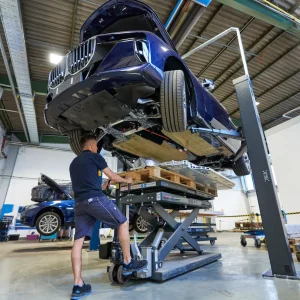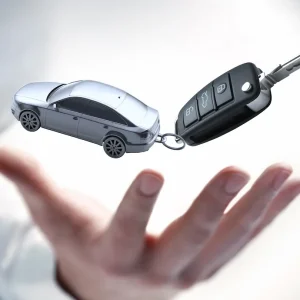With new legislation around the corner, every fleet should be up to speed on tyres. Tristan Young investigates
With the speed-camera equivalent for illegal tyres being investigated by UK police and eco-labeling on the way in 2012, now is the perfect time to look at your fleet tyre policy. And that’s without mentioning the onset of winter and the increased need to keep your business mobile in the current economic climate.
The basics are very simple. There must be at least 1.6mm of tread over all of the central 75% of the tyre. Interestingly, this does not apply to the spare, as a spare isn’t a legal requirement in the UK. However, as soon as you fit a spare it needs to be legal.
Under the Road Vehicles (Construction and Use) Regulations 1986 tyres must also be of the correct size and type for the vehicle concerned. This set of regulations also deals with tyre pressures, but do not state how much over- or under-inflated a tyre needs to be before they’re deemed illegal. Where you stand will come down to how close the pressure matches the manufacturer’s recommendations and the individual police officer’s discretion.
However, the regulations are clearer on tyre damage and state that there must not be any lump, bulge, tear or failure of the tyre structure.
Fine points
If your vehicle is found to have defective tyres the driver faces a maximum penalty of a £2500 fine plus three points on their driving licence, per illegal tyre. In the worst case that could mean a £10,000 fine and 12 points.
While the legal limit for tyres is 1.6mm, the widely held view from both tyre manufacturers and safety experts is that tyres should be changed when tread depth reaches 3mm (the typical depth for a new tyre is 8mm). This figure is recommended to reduce the risk of aquaplaning and significantly lowers stopping distances in the wet (see ‘Under pressure panel, page 19’).
Road safety organisations recommend tyre pressure and depth checks every two weeks plus before any long journeys. Fast fit companies such as BusinessCar Award winner Kwik-Fit offer free tyre checks. Checks should not just assess pressure and tyre depth, but also tyre condition to make sure the tyre isn’t damaged.
Kwik-Fit Fleet sales director Peter Lambert said: “New regulations like corporate and social responsibility and the duty of care regulations place even greater focus on the need to carry out regular tyre checks as part of a routine maintenance plan.
Kwik-Fit provides a free tyre-check service on a drive-in basis, where the condition of a tyre is inspected, tyre tread depths are measured and tyre pressures checked and corrected. The findings are detailed in a written report for your convenience.”
Tyre labelling
From the start of November 2012 all new tyres will have to carry eco-labels in the same way that fridges and washing machines already do.
While a year may seem a long way off, many tyre manufacturers will start labelling their tyres in the next few months. These labels will give buyers an idea of a tyre’s performance in three areas – fuel efficiency (or rolling resistance), noise and wet braking. Only the last of those is related to safety, while tyre manufacturers say that making a quiet tyre with good (low) rolling resistance makes it harder to achieve a good wet braking score.
Despite not being a comprehensive system the industry is broadly supportive of the measure, with a few reservations.
“Currently there’s no guidance at all on tyres, so some guidance is useful, but it doesn’t give all the information buyers need,” says an SMMT spokesman. “I don’t think it’s a case of a little information is a dangerous thing because people know that buying a premium tyre means they’ll be getting a better performance tyre than a Budget tyre.
“The SMMT is looking forward to the labelling coming in because it will help lower vehicle emissions, but safety is a key focus for us. The labelling is a step forward.”
Greater safety
Premium tyre manufacturer Continental also believes the tyre labelling is a good start for consumer information, but is pushing for far greater safety and performance information to be included in future.
“The new label is designed to show information regarding three criteria, however there are many other important performance factors to consider,” says a spokesman.
Continental highlights the following six areas as those they’d like to see included:
. Resistance to aquaplaning
. Driving stability
. Handling and steering position on wet and dry roads
. Durability
. Braking performance on dry roads
. Capabilities in winter conditions.
Continental believes buyers should stick with original equipment tyres, or at least check independent reviews before replacing their tyres: “Automotive manufacturers require the very highest standard across all these performance factors before they approve tyres for their new vehicles.
“Furthermore, widely published tyre tests take at least 11 further relevant performance factors into account and therefore continue to be an excellent source of independent information regarding the total performance of a tyre.”
The cold facts on winter rubber
Winter tyres are not just for snow. Due to the tread pattern and rubber compound they are also better than standard (summer) tyres in the wet and at temperatures below 7°C.
However, even at temperatures above 7°C, on dry roads, winter tyres still perform almost as well as summer tyres.
Tyre manufacturer Continental claims that a vehicle fitted with winter tyres will come to a standstill on a snow-covered road from a speed of just 30mph after 35m; with normal tyres the braking distance required is a further eight metres (43m) or to put it another way, two more car lengths.
While winter tyres do take slightly longer to stop on dry, warm roads than the summer type, the difference is far smaller than with summer tyres used in winter.
How to read the new label
The best-performing tyres in the three tests will score two ‘A’ ratings plus a low number for noise.
Fuel efficiency
Many eco cars, such as the VW Bluemotions and Skoda Greenlines, have deliberately low rolling-resistance tyres fitted so that tyres take less energy to propel vehicles forward. The grades run from A to G, with D not being used.
“The difference between each grade means a reduction or increase in fuel consumption of between 2.5%-4.5%. That’s a difference of about 0.42-0.56mpg for a 36.0mpg car per grade,” says a spokesman from tyre manufacturer Continental.
Wet braking
Wet grip is a critical safety feature and relates to the tyre’s ability to stop a vehicle on wet roads, expressed in terms of distance. The grades used for this test are A to G, with D and G not being used in order to introduce a greater step between some levels. The difference between each grade means an increase or decrease in stopping distance of between one to two car lengths (between three and six metres) when using maximum braking from 50mph.
Noise
This is the external noise made by the tyre and is measured in decibels. The more black bars shown on the label, the louder the tyre.





